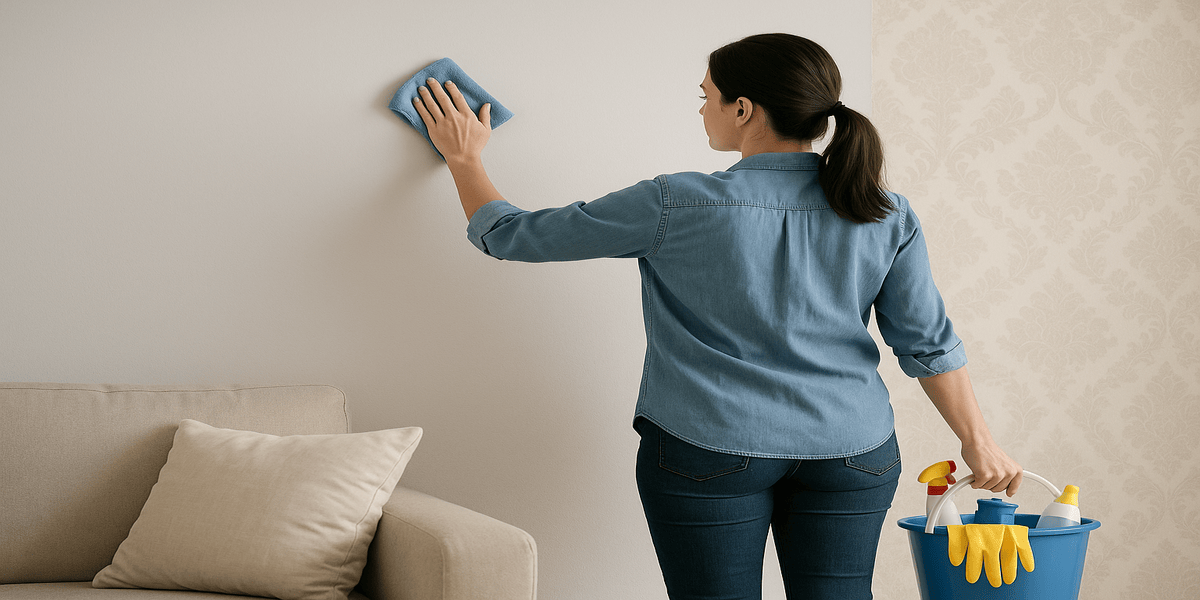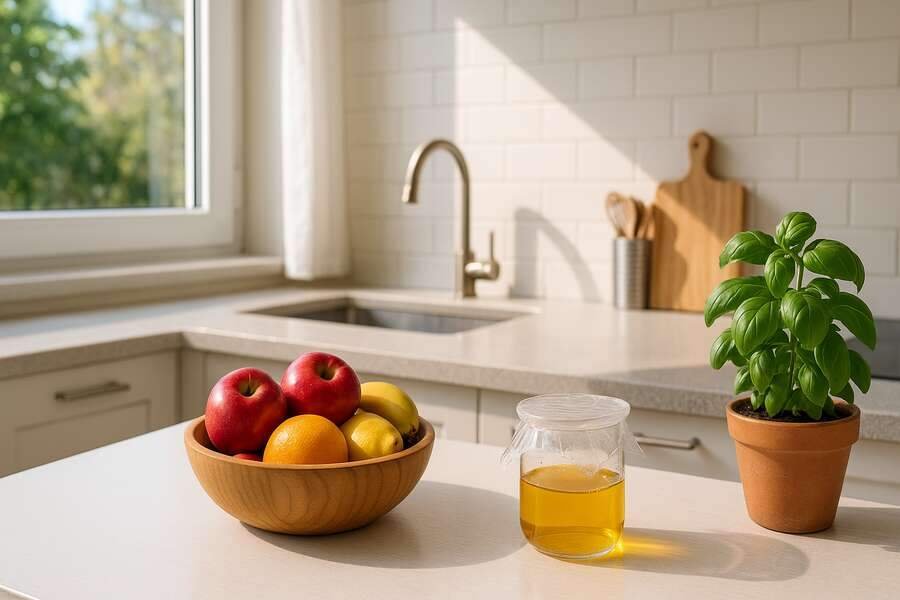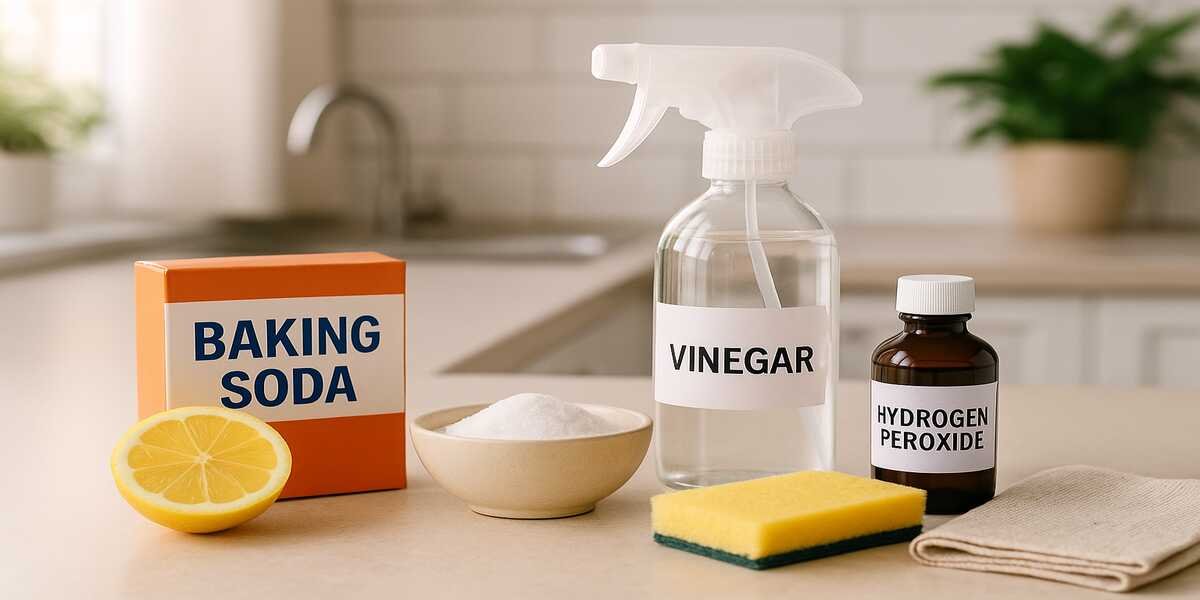The Right Way to Clean Painted and Wallpapered Walls

Clean Painted and Wallpapered Walls the Right Way
Have you ever gazed at your walls asking how they became so dirty? Be it mystery fingerprints of little explorers, greasy hand marks around the light switches, or a fine layer of dust that has dimmed your paint or wallpaper, walls are also the most neglected area of house cleaning. Nevertheless, they literally are everywhere! You pass them every day, you trim them and bind them carefully, but you seldom give them a good cleaning. The good news is? Washing your walls should not become a hectic task. Your walls can be made to look new again no damage to the paint work or stripping off the paper–with several very simple and ready methods and using the correct products. So, now we will plunge in the problem of safe wall cleaning of both painted and wallpapered walls.
1. Begin with Light Dusting
It is important to dust and scrape off loose dirt on the walls, before applying any moisture based cleaner, as per Bond Cleaning Southport. Vacuum, Dust Dust cobwebs and the like with the aid of a micro cloth, dry mop or vacuum cleaner with soft dry brush attachment. Working downwards ensures that it is not only once that your work falls to the dirtier areas thus causing dust to fall onto the clean areas. When corrugated paint or a rough or fragile wallpaper exists, be soft to keep it from rubberizing or damaging it.
2. Find out Your Paint Type
It is imperative to know the type of finish you have in terms of the paint type. It identifies the strength of your walls to water and scrubbing. Gloss and semi gloss finishes are very durable, easy to swab and are therefore very applicable in bathrooms and kitchens. Satin and eggshell washing is moderately washable and must be treated with more care. The most delicate finishes are flat or matte finishes and it is easy to see streaks on them or scrubbing them so hard may result in damage. When working with a cleaning solution, always make a spot test on an obscure corner before putting it on a bigger space.
3. Safe Clean of Painted Walls
During cleaning of painted walls, add a few drops of gentle dish soap in a bucket of warm water. Wet a microfiber cloth or sponge in the solution, but make sure that it is not dripping; then start scrubbing in sections of the wall. Turn and use circular motions and never work bottom to top. Rinse the cloth clean with a plain cloth of water after cleaning. Lastly, wipe off the watermarks or blotting stains on the wall with a clean towel. In the cases of persistent stains, form a paste of baking soda and water, apply it to the stain and wipe it away.
4. Wallpapered Walls Washers and Cleaners
Wallpaper can be washed, however, one should proceed with additional care, in particular, when it comes to textured and non-washable. Begin by dusting off a wall surface with a puff or vacuum cleaning through a brush attachment. Make a soft mix of gentle dish-washing detergent and hot water and first of all check it out in a concealed zone. Make it safe, wet a sponge or soft rag, and wipe the wallpaper with mild vertical strokes. Surface should not be saturated, excess water may destroy the adhesive or lead to bubbles. Dry off right away using a clean towel. In the case of non-washable wallpaper, dry clean only with a wallpaper sponge or eraser to raise or remove surface dirt but do not add any moisture.
5. Target Areas of Congregation
Some parts of the wall are easily prone to be dirtier than others. Fingerprint, grease and scuff marks on light switches, doorknobs, baseboard and hallway. Clean such high traffic interventions more often to make them appear new and to avoid the effects of stains becoming permanent. To remove hard stains on painted surfaces use a soft cleaning agent or a melamine sponge.
6. Free Dirt and Crayon Scribbling
Melamine sponges are good when it comes to scuff marks on painted walls. Not dry, but merely moist his hands and friction. Baking soda and water tended to form a paste which also worked. Abrasive techniques should not be used on a wallpaper, but rub the marks away with a gum eraser or a sponge that has no moisture. In case your children become adventurous with crayons, just rub non-gel toothpaste on the stain and a soft cloth. Wash and dry with absorption afterwards.
7. Refreshing Without Repaint
This is glass-like, and with time, clean walls may appear to be dirty since dust builds up over a period of time as well as the previous effects of light and air. A good cleaning can restore the color and lighten the room and not a repaint. Your painted walls should at least be cleaned once or twice a year, and in case of spot cleanings. Walls that are wall-papered will need to be dusted lightly after every few months to make them look new and appealing.
For deep and time-saving cleaning, you can always rely on Bond Cleaning Sunshine Coast for professional services.
8. Last Rinse and Dry Do not Forget
Regardless of the cleaning technique that you employ, it is important to remove any soap residues by using a wet rag and then drying the surface. The remnants of any cleaner can draw additional dust or create streaks. Wipe with a clean dry towel or set a fan near the area in order to help dry out. The right drying process also prevents entries of moisture to the paint or wallpaper glue, which would have long-term damaging effects.
Conclusion
Your walls do not deserve as much attention as your floors or furniture do, but they silently absorb the chaos that messy life implies. Traditional routine cleaning of walls-a careful job may remove years of dirt, lighten your house and help to prolong the life of your paint or wallpaper. Be it painted surfaces or trendy wallpaper the important thing to remember is to just know what you are dealing with, get the right cleaning tactic and be easy on it.
The lesson then, the next time you get in one of your cleaning moods is to head up and treat your walls the way they should be treated. Clean walls do not only look good but will make your whole space appear fresher, calmer and well, really clean.



